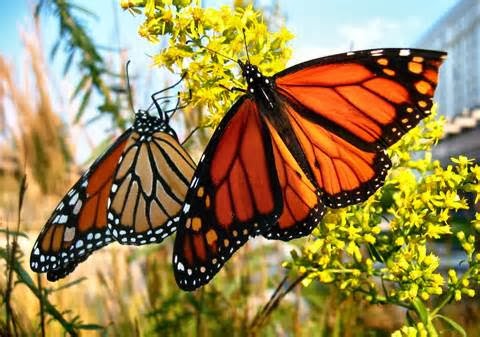Ponder Activities:
These activities require the learner to think deeply and expand on
the subject (Horton, 2012). The learner assessing what information they have
already learned through questioning and learning. These include: rhetorical
questions, mediation activities, cite-example activities, evaluation
activities, summary activities and extend peer ponder activities (Horton,
2012).
Questioning Activities
Learners fills the gap by asking questions (Horton,
2012). When the learning is curious or has not made full connections to the
subject they can ask questions to the teacher, instructor, presenter and
research to find their answers.
An example of questioning that could lead to research would be “Do any other
animals or insects transform
like butterflies?”
Stories by Learners
The
learner recalls events from their own life to make connections to the subject.
These are great ways to evaluate the learner’s storytelling, recalling of information,
writing skills and asses how the learners are creating and making connections
to the learning activities.
Job Aids
These are tools that help learners apply what they
have learned to real world tasks such as glossaries, calculators, and
e-consultants (Horton, 2012). This would be prevalent in an activity after
learning
interest to do activities teaching how to calculate interest rates for mortgage
or finding out how much a purchase will be with a high interest rate.
Research Activities
Requires
learners to discover and use their own sources of information and can be scavenger
hunts and guided research (Horton, 2012). Geocaching is a great tool to use
with learners of all ages.
Original Work
Learners complete their own genuine work to be submitted
for critique such as decision activities, work-document activities, and journal
activities (Horton, 2012). The teacher has an opportunity to find out how the
learners are creating their own connections to the learning, what areas there
are still unclear of and can be used as an assessment to their skills and
knowledge level of the subject.
Connect Learning Activity: Tummy Tales
Age: Pre-K through 3
Grade Students
Activity Type: Stories by Learners
Materials Needed: Writing Materials
Teacher Preparation: Prepare for the unit by
printing page inserts.
Description of the Activity: Students will
create their own stories by answering the question what caused their stomach
ache. The children will reflect on their own experiences and remember when they
experienced an upset stomach. The children will make connections from the story
to their own real world experiences. The children will brainstorm reasons why
they think the food items gave them a tummy ache. Then the class will discuss
food options that would not have given them an upset stomach and other healthy
food choices.
Here is an example of the page documents. The teacher will create or allow a student to design the title page. Each page with be left blank for the students to add their name, food choices and draw pictures of the foods that cause them a tummy ache.








